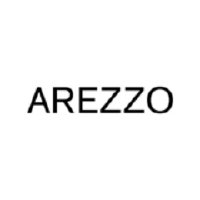
Arezzo Industria e Comercio SA
BOVESPA:ARZZ3


| US |

|
Johnson & Johnson
NYSE:JNJ
|
Pharmaceuticals
|
| US |

|
Berkshire Hathaway Inc
NYSE:BRK.A
|
Financial Services
|
| US |

|
Bank of America Corp
NYSE:BAC
|
Banking
|
| US |

|
Mastercard Inc
NYSE:MA
|
Technology
|
| US |

|
UnitedHealth Group Inc
NYSE:UNH
|
Health Care
|
| US |

|
Exxon Mobil Corp
NYSE:XOM
|
Energy
|
| US |

|
Pfizer Inc
NYSE:PFE
|
Pharmaceuticals
|
| US |

|
Palantir Technologies Inc
NYSE:PLTR
|
Technology
|
| US |

|
Nike Inc
NYSE:NKE
|
Textiles, Apparel & Luxury Goods
|
| US |

|
Visa Inc
NYSE:V
|
Technology
|
| CN |

|
Alibaba Group Holding Ltd
NYSE:BABA
|
Retail
|
| US |

|
3M Co
NYSE:MMM
|
Industrial Conglomerates
|
| US |

|
JPMorgan Chase & Co
NYSE:JPM
|
Banking
|
| US |

|
Coca-Cola Co
NYSE:KO
|
Beverages
|
| US |

|
Walmart Inc
NYSE:WMT
|
Retail
|
| US |

|
Verizon Communications Inc
NYSE:VZ
|
Telecommunication
|
Utilize notes to systematically review your investment decisions. By reflecting on past outcomes, you can discern effective strategies and identify those that underperformed. This continuous feedback loop enables you to adapt and refine your approach, optimizing for future success.
Each note serves as a learning point, offering insights into your decision-making processes. Over time, you'll accumulate a personalized database of knowledge, enhancing your ability to make informed decisions quickly and effectively.
With a comprehensive record of your investment history at your fingertips, you can compare current opportunities against past experiences. This not only bolsters your confidence but also ensures that each decision is grounded in a well-documented rationale.
Do you really want to delete this note?
This action cannot be undone.

| 52 Week Range |
41.76
65.9622
|
| Price Target |
|
We'll email you a reminder when the closing price reaches BRL.
Choose the stock you wish to monitor with a price alert.

|
Johnson & Johnson
NYSE:JNJ
|
US |

|
Berkshire Hathaway Inc
NYSE:BRK.A
|
US |

|
Bank of America Corp
NYSE:BAC
|
US |

|
Mastercard Inc
NYSE:MA
|
US |

|
UnitedHealth Group Inc
NYSE:UNH
|
US |

|
Exxon Mobil Corp
NYSE:XOM
|
US |

|
Pfizer Inc
NYSE:PFE
|
US |

|
Palantir Technologies Inc
NYSE:PLTR
|
US |

|
Nike Inc
NYSE:NKE
|
US |

|
Visa Inc
NYSE:V
|
US |

|
Alibaba Group Holding Ltd
NYSE:BABA
|
CN |

|
3M Co
NYSE:MMM
|
US |

|
JPMorgan Chase & Co
NYSE:JPM
|
US |

|
Coca-Cola Co
NYSE:KO
|
US |

|
Walmart Inc
NYSE:WMT
|
US |

|
Verizon Communications Inc
NYSE:VZ
|
US |
This alert will be permanently deleted.
 Arezzo Industria e Comercio SA
Arezzo Industria e Comercio SA
Arezzo Industria e Comercio SA
Investor Relations
Arezzo Industria e Comercio SA, a distinguished Brazilian footwear and accessories company, has carved a niche for itself in the world of retail by focusing on innovation, quality, and diverse branding. Founded in 1972, Arezzo has grown from a small family business into a powerful player in the Latin American retail market. With an acute pulse on consumer trends, the company strategically operates an impressive portfolio of brands that cater to various tastes and income segments, including Arezzo, Schutz, Anacapri, Alexandre Birman, Fiever, and Alme. These brands allow Arezzo to appeal to a broad spectrum of customers, thereby maximizing its market reach. Through a mix of owned stores, franchised outlets, and e-commerce platforms, Arezzo efficiently taps into both traditional and digital retail channels, ensuring a widespread presence across Brazil and an expanding footprint internationally.
The core of Arezzo's business model lies in its adept ability to integrate design, production, and sales. The company smartly manages the entire value chain from conceptualizing designs to overseeing the retail experience, thus maintaining stringent quality control and brand consistency. By owning its manufacturing facilities, Arezzo ensures high-quality production while maintaining cost efficiency. Additionally, it's the company's innovative marketing strategies and collaborations with prominent personalities that keep the brands fresh and in vogue, further ensuring customer loyalty and expanding its client base. The synergy between its various brands and adaptive strategies solidifies Arezzo's reputation and financial performance, making it a compelling entity in the global fashion industry.

Arezzo Industria e Comercio SA, a distinguished Brazilian footwear and accessories company, has carved a niche for itself in the world of retail by focusing on innovation, quality, and diverse branding. Founded in 1972, Arezzo has grown from a small family business into a powerful player in the Latin American retail market. With an acute pulse on consumer trends, the company strategically operates an impressive portfolio of brands that cater to various tastes and income segments, including Arezzo, Schutz, Anacapri, Alexandre Birman, Fiever, and Alme. These brands allow Arezzo to appeal to a broad spectrum of customers, thereby maximizing its market reach. Through a mix of owned stores, franchised outlets, and e-commerce platforms, Arezzo efficiently taps into both traditional and digital retail channels, ensuring a widespread presence across Brazil and an expanding footprint internationally.
The core of Arezzo's business model lies in its adept ability to integrate design, production, and sales. The company smartly manages the entire value chain from conceptualizing designs to overseeing the retail experience, thus maintaining stringent quality control and brand consistency. By owning its manufacturing facilities, Arezzo ensures high-quality production while maintaining cost efficiency. Additionally, it's the company's innovative marketing strategies and collaborations with prominent personalities that keep the brands fresh and in vogue, further ensuring customer loyalty and expanding its client base. The synergy between its various brands and adaptive strategies solidifies Arezzo's reputation and financial performance, making it a compelling entity in the global fashion industry.





























 You don't have any saved screeners yet
You don't have any saved screeners yet
